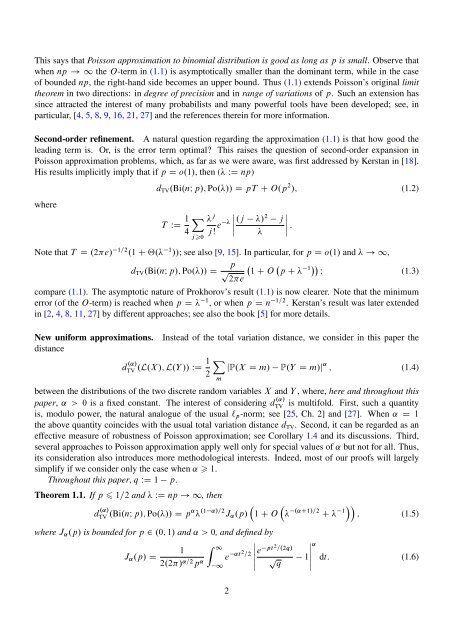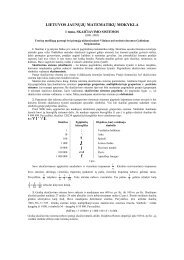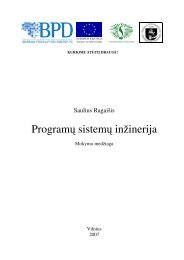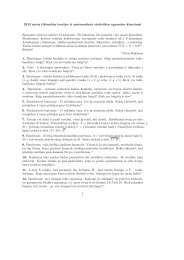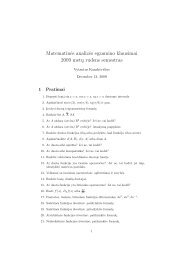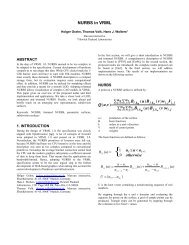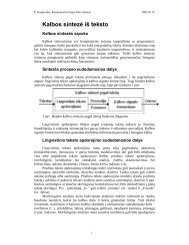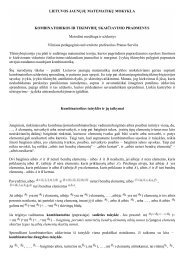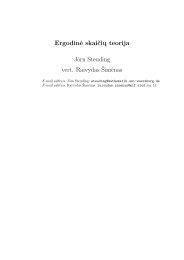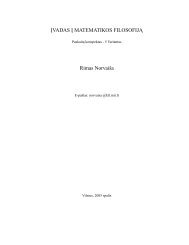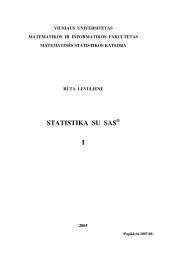Preprint
Preprint
Preprint
You also want an ePaper? Increase the reach of your titles
YUMPU automatically turns print PDFs into web optimized ePapers that Google loves.
This says that Poisson approximation to binomial distribution is good as long as p is small. Observe thatwhen np ! 1 the O-term in (1.1) is asymptotically smaller than the dominant term, while in the caseof bounded np, the right-hand side becomes an upper bound. Thus (1.1) extends Poisson’s original limittheorem in two directions: in degree of precision and in range of variations of p. Such an extension hassince attracted the interest of many probabilists and many powerful tools have been developed; see, inparticular, [4, 5, 8, 9, 16, 21, 27] and the references therein for more information.Second-order refinement. A natural question regarding the approximation (1.1) is that how good theleading term is. Or, is the error term optimal? This raises the question of second-order expansion inPoisson approximation problems, which, as far as we were aware, was first addressed by Kerstan in [18].His results implicitly imply that if p D o.1/, then ( WD np)whered TV .Bi.nI p/; Po.// D pT C O.p 2 /; (1.2)T WD 1 4Xj0 jj !ˇˇˇˇ e .j / 2 jNote that T D .2e/ 1=2 .1 C ‚. 1 //; see also [9, 15]. In particular, for p D o.1/ and ! 1,d TV .Bi.nI p/; Po.// D p p 1 C O p C 1 I (1.3)2ecompare (1.1). The asymptotic nature of Prokhorov’s result (1.1) is now clearer. Note that the minimumerror (of the O-term) is reached when p D 1 , or when p D n 1=2 . Kerstan’s result was later extendedin [2, 4, 8, 11, 27] by different approaches; see also the book [5] for more details.New uniform approximations.distanceˇ :Instead of the total variation distance, we consider in this paper thed .˛/TV .L.X /; L.Y // WD 1 2XjP.X D m/ P.Y D m/j˛ ; (1.4)mbetween the distributions of the two discrete random variables X and Y , where, here and throughout thispaper, ˛ > 0 is a fixed constant. The interest of considering d .˛/TV is multifold. First, such a quantityis, modulo power, the natural analogue of the usual `p-norm; see [25, Ch. 2] and [27]. When ˛ D 1the above quantity coincides with the usual total variation distance d TV . Second, it can be regarded as aneffective measure of robustness of Poisson approximation; see Corollary 1.4 and its discussions. Third,several approaches to Poisson approximation apply well only for special values of ˛ but not for all. Thus,its consideration also introduces more methodological interests. Indeed, most of our proofs will largelysimplify if we consider only the case when ˛ 1.Throughout this paper, q WD 1 p.Theorem 1.1. If p 1=2 and WD np ! 1, thend .˛/.1TV .Bi.nI p/; Po.// D p˛ ˛/=2J˛.p/where J˛.p/ is bounded for p 2 .0; 1/ and ˛ > 0, and defined by1J˛.p/ De ˛t 2 =2e pt 2 =.2q/p 12.2/˛=2 p˛ˇ q ˇZ 111 C O .˛C1/=2 C 1 ; (1.5)˛dt: (1.6)2


